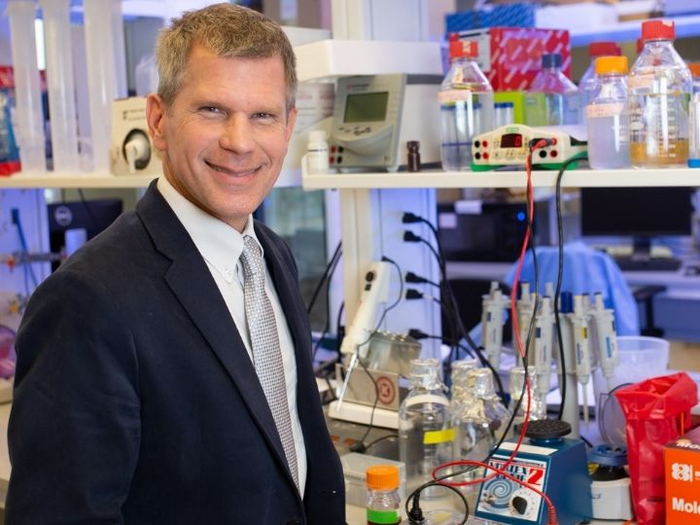Inside your body on the surface of cell membranes, a metaphorical communication and traffic network is underway as hormones – or chemical messengers – bind to cell membrane receptors to fine tune how the cell behaves. Once bound together, this hormone-receptor complex works to carry out a variety of functions by ferrying chemical signals from outside the cell and translating those signals into action inside the cell. The process of moving into the cell is called trafficking.

Credit: University of Houston
Inside your body on the surface of cell membranes, a metaphorical communication and traffic network is underway as hormones – or chemical messengers – bind to cell membrane receptors to fine tune how the cell behaves. Once bound together, this hormone-receptor complex works to carry out a variety of functions by ferrying chemical signals from outside the cell and translating those signals into action inside the cell. The process of moving into the cell is called trafficking.
Now, for the first time, new technology developed at the University of Houston College of Pharmacy will be able to peer inside and get a close look at the trafficking in real-time. Bradley McConnell, professor of pharmacology, has devised a way to watch the membrane protein trafficking using bioluminescence, the production and emission of light inside living organisms, replacing the need for complicated protocols, methods or highly automated equipment.
“We describe a powerful unrestricted and universal technology of drug discovery that is based on trafficking properties of plasma membrane receptors,” reports McConnell in Communications Biology, a Nature journal. The paper’s lead author is Arfaxad Reyes-Alcaraz, a postdoctoral fellow in McConnell’s laboratory. “This technology can be applied to monitoring the effectiveness of a potential new therapeutic drug that is targeted to a cell receptor and then internalized into the cell. It can also be used to monitor the SARS-CoV-2 viral entry into the cell.”
Ultimately, the researchers expect the process to be used for drug development for heart disease, metabolic disorders, cancer, infectious diseases, COVID-19 and others.
The process monitors how cell receptors are internalized into the cell as part of their normal function in response to a hormone, or a therapeutic drug, interacting with its receptor – a powerful tool to understand how the body works. Scientists have successfully studied this process for years using complex and expensive biological tools, but highly sensitive and versatile technologies have been lacking to study such processes in real-time living systems.
“Now imagine studying this process simply and inexpensively with a method that is even more informative than is currently available,” said McConnell. “The ability to selectively generate a bioluminescent signal when the membrane receptor is in the early endosome to monitor receptor internalization (i.e., membrane trafficking) is novel.”
Journal
Communications Biology
Article Title
A NanoBiT assay to monitor membrane proteins trafficking for drug discovery and drug development
Article Publication Date
8-Mar-2022




